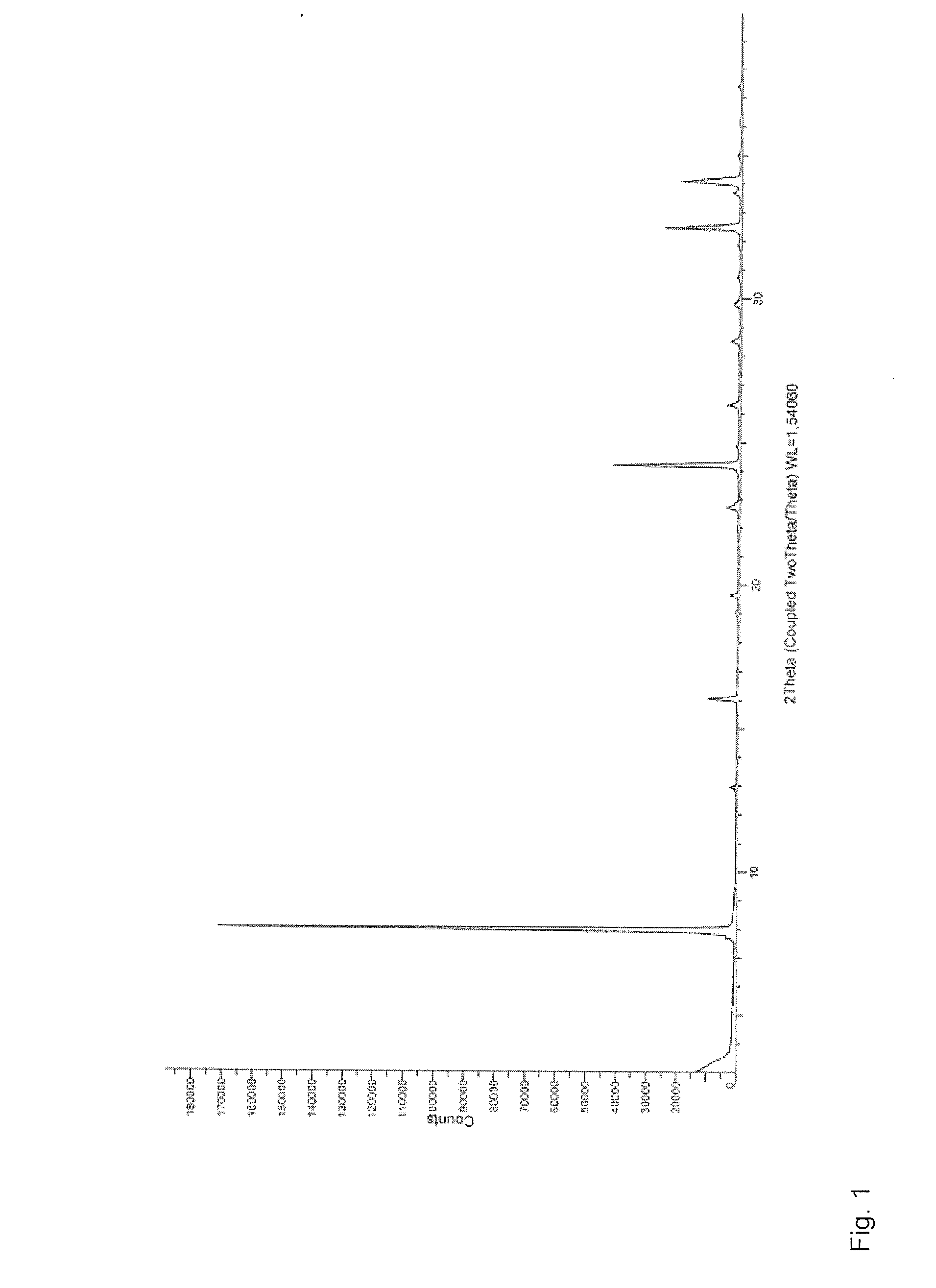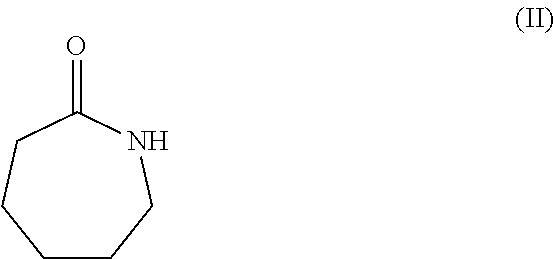Isolation and purification of 6-aminocaproic acid
- Summary
- Abstract
- Description
- Claims
- Application Information
AI Technical Summary
Benefits of technology
Problems solved by technology
Method used
Image
Examples
example 1
Synthesis of a Hydrochloride Salt of 6-Aminocaproic Acid of Formula (Ia) by Hydrolysis of Caprolactam of Formula (II)
[0050]160.0 g of caprolactam and 344 g of HCl 37 wt. %. are placed at room temperature and under nitrogen atmosphere in a reactor comprising a mechanical stirrer, a reflux condenser and a trap containing NaOH 10 wt. % and the stirred mixture is heated to 90° C. After 15 hours 480 mL of toluene are added and a Dean-Stark trap is mounted. The mixture is vigorously stirred and the water is removed by azeotropic distillation. Optionally, a seed crystal of 6-aminocaproic acid is added and a crystalline solid is formed. After complete removal of the water, the mixture is cooled down to 20° C. in about 6 hours. After one night, the solid filtered off, rinsed with toluene and dried at 50° C. at a reduced pressure providing 233 g of the hydrochloride salt of the 6-aminocaproic acid of formula (Ia) in a crystalline form (yield: 98%). HPLC at 210 nm, title: 99.2%, purity HPLC at...
example 2
Synthesis of 6-Aminocaproic Acid of Formula (I) Starting from the Hydrochloride Salt of 6-Aminocaproic Acid of Formula (Ia)
[0052]60.0 g of the hydrochloride salt of the 6-aminocaproic acid of formula (Ia), as prepared in Example 1, and 276 mL of methanol are placed at 20° C. and under nitrogen atmosphere in a reactor comprising a mechanical stirrer and a thermometer. 16.3 mL of triethylamine are added within about 30 minutes to the stirred solution, which is then seeded with 6-aminocaproic acid. After 2 hours under stirring, the remaining 38.6 mL of triethylamine are added within 5 hours. The mixture is stirred for further 10 hours at 20° C., then the solid is filtered off, washed with methanol and dried at 50° C. at a reduced pressure providing 39.2 g of 6-aminocaproic acid of formula (I) as a white solid (Yield: 83%). HPLC Title at 210 nm: 100.6%, purity HPLC at 210 nm: 99.8%; presence of impurity (III): 0.19% in A %. Argentometric titration: chloride content 0.16%
example 3
Recrystallization of 6-Aminocaproic Acid of Formula (I)
[0053]35.0 g of 6-aminocaproic acid of formula (I), as prepared in Example 2, and 210 mL of methanol are placed at room temperature and under nitrogen atmosphere in a reactor comprising a mechanical stirrer, a reflux condenser and a thermometer. The mixture is heated to reflux, and 35 mL of water is added stepwise to completely dissolve the product. The clear solution is then brought to 50° C. and seeded with 6-aminocaproic acid. 175 mL of acetone are added over 3 hours and the mixture is kept at 50° C. for 1 hour, then cooled down to 20° C. in 3 hours. After stirring overnight, the solid is filtered off, washed with methanol and dried at 50° C. at a reduced pressure providing 31.0 g of 6-aminocaproic acid of formula (I) as a white solid (Yield: 88%). HPLC Title at 210 nm: 98.9%, purity HPLC at 210 nm: 99.8%; presence of impurity (III): 0.08% in A %. Argentometric titration: chloride content 0.04%
PUM
| Property | Measurement | Unit |
|---|---|---|
| Fraction | aaaaa | aaaaa |
| Fraction | aaaaa | aaaaa |
| Fraction | aaaaa | aaaaa |
Abstract
Description
Claims
Application Information
 Login to View More
Login to View More - R&D
- Intellectual Property
- Life Sciences
- Materials
- Tech Scout
- Unparalleled Data Quality
- Higher Quality Content
- 60% Fewer Hallucinations
Browse by: Latest US Patents, China's latest patents, Technical Efficacy Thesaurus, Application Domain, Technology Topic, Popular Technical Reports.
© 2025 PatSnap. All rights reserved.Legal|Privacy policy|Modern Slavery Act Transparency Statement|Sitemap|About US| Contact US: help@patsnap.com



